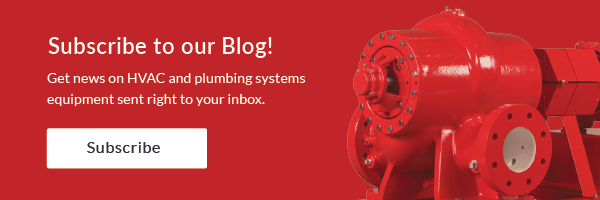Plate exchangers such as the Bell and Gossett GPX series have significantly higher velocity limits than shell and tube heat exchangers, but there are still limits. Let’s start with the velocity limits on the B&G series GPX plate heat exchangers with stainless steel plates. There are three considerations when determining the maximum flow rate and, therefore, the maximum velocity limits in gasketed plate heat exchangers.
3 Maximum Velocity Considerations in B&G GPX Plate Exchangers
- The industry standard maximum velocity in the B&G GPX style plate exchangers is 25 feet per second (FPS). These products have much more heat transfer per square foot than shell and tube units. One way this happens is through higher velocities. Another concern in shell and tube designs is flow-induced vibration of the tube bundle. Obviously the B&G GPX plate exchangers are not subject to this limitation.
- It is rare in the HVAC industry that we provide a heat exchanger with velocities near the maximum, because the pressure drop gets so high that the engineer doesn’t want the added energy costs on the pumping side. It’s not unusual for the plate velocities to be closer to 10 FPS due to pressure drop limitations.
- Flow maldistribution is a concern in all heat transfer devices. That’s a fancy term that simply means the flow rate in each channel is not the same. The programs used to select heat exchangers assume equal flow in each channel. To avoid flow maldistribution, Bell & Gossett recommends a maximum pressure drop through the nozzles less than or equal to 40% of the total pressure drop of the heat exchanger. For example: If the total pressure drop is specified to be 15 PSIG, the pressure drop for the entrance and exit nozzles should be less than 6 PSIG (15 X 0.4 = 6).
Minimum Velocity Considerations in B&G GPX Plate Exchangers
The Bell and Gossett GPX gasketed plate heat exchangers are designed to remain turbulent under very low water velocities. If the minimum velocity is 5% of the design velocity, the Reynolds number is high enough to continue turbulent flow. Since plate exchangers are used for very cold refrigerants, including secondary glycol refrigerants, it is best to check with your B&G representative once the minimum flow rate is determined.
Helpful specification and scheduling tips for plate exchangers:
- Make sure your schedule has a perfect heat balance or you may not get all the heat transfer you expected.
- Don’t specify the minimum square feet of surface, but do specify AHRI in water-to-water gasketed plate exchangers.
See Next week’s Monday Morning Minutes post for more information on these two specification items.


